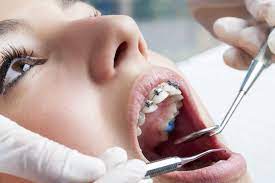Why To Avoid Direct-to-Consumer Aligners: Understanding the Gap Between Orthodontists and Direct-to-Consumer Aligners"
April 22nd, 2024
In the pursuit of a straighter, more confident smile, individuals today are presented with many different treatment options. From traditional metal braces to innovative aligner treatments, the landscape of orthodontic care has evolved significantly. Among these choices, two prominent paths emerge: seeking treatment from an orthodontic specialist, seeking treatment from a general dentist performing orthodontic specialty work, or opting for direct-to-consumer aligner products when patients are. While both avenues promise results, the distinction between them is substantial and warrants careful consideration. In this blog post I will go into some of the critical differences between these two approaches.
or the purposes of this blog, a Direct-to Consumer aligner company is one where you taking impressions of your own teeth and send it in to get aligners for your teeth without the intervention of a dental professional or you visit a "Scan Shop" where a representative will take some type of model of your teeth and you will be sent aligners to straighten your teeth.
At Strouse Orthodontics, I design every aligner treatment plan that we provide our patients. First comes a complete diagnosis of your face, your jaws, and your teeth, the presentation of treatment options, and a final custom treatment plan to address your specific situation.
Aligner design requires an understanding of 1) the patient’s final goals, 2) the sequence and speed of tooth movements, 3) the biomechanics(how the teeth move) that must be built in the prescription to achieve the desired results, and 4) the additional features that are required for difficult tooth movements. Most direct-to-consumer aligners as designed by computer algorithms and then approved by “dental professionals.” Although there may be a dentist’s name on the aligner packaging, he or she had nothing to do with designing your aligners. General dentists(non orthodontic specialists) often do the same, doing little to no analysis or modifications to a patients treatment plan. There are several issues that can occur with a Direct-to Consumer Orthodontic plan.
No Visits
A huge selling point for DTC aligners is that no orthodontic visits are necessary. However, this is also the biggest red flag. You won’t see a orthodontist or even a dental professional at any point in the process. It may not seem like it, but moving your teeth into more optimal positions will impact your entire mouth. Even in simple cases, straightening the teeth will affect the health of your teeth as well as the gums, bones and roots. An orthodontist is trained to ensure all of these are healthy before and during the treatment process to produce safe movement of the teeth.
No Attachments
With Direct To Consumer "Orthodontics" no attachments are placed on the teeth. This is because there is no involvement of a dental professional. Due to the shapes of teeth, as well as the tooth movement being completed, there may be a need for tooth-colored attachments made of dental composite be attached to your teeth. Patients are not able to bond attachments to their own teeth. While there are some tooth movements can be occur without them, there are many tooth movements that may not be able to be predictably achieved without attachments.
Your Teeth Might Not Move the Way They Should
It is important that the teeth move the way the the orthodontist is intending over the course of treatment. If there are problems with how the teeth are movement for any reason(lack of attachments, wrong staging of tooth movements, wrong speed of tooth movement, poor compliance with aligner wear), with a Direct To Consumer Company, there is no way to have your progress evaluated. With an orthodontic specialist, you will be able to have your progress evaluated and be given instructions for how to handle a problem that arises during treatment.
No Rubber Bands
Both braces and aligners can both be straighten the top and bottom teeth individually. When modifications with the bite are needed in the bite however, orthodontists typically prescribe rubber bands connected between the top and bottom teeth to make these changes. Direct-to-consumer companies do not utilize rubber bands with their treatment. Furthermore, they typically have consumers sign a waiver that they understand that the aligners from their company will not improve their bite. This is similar with orthodontic treatment with a general dentist. While they are able to prescribe rubber band wear, they often lack the orthodontic knowledge to correct more advanced malocclusions, sometimes without informing the patient there are any bite issues present at all.
By seeing a specialist in orthodontics for orthodontic care(braces, Invisalign), you can feel confident that an expert is prescribing, planning and monitoring your care. An orthodontist will be able to monitor your teeth, discuss treatment goals, review various options for treatment and be able to provide the necessary in office adjustments that are not possible with a Direct-to-Consumer aligner company. You only get one set of teeth. Trust your smile to an orthodontic specialist.








